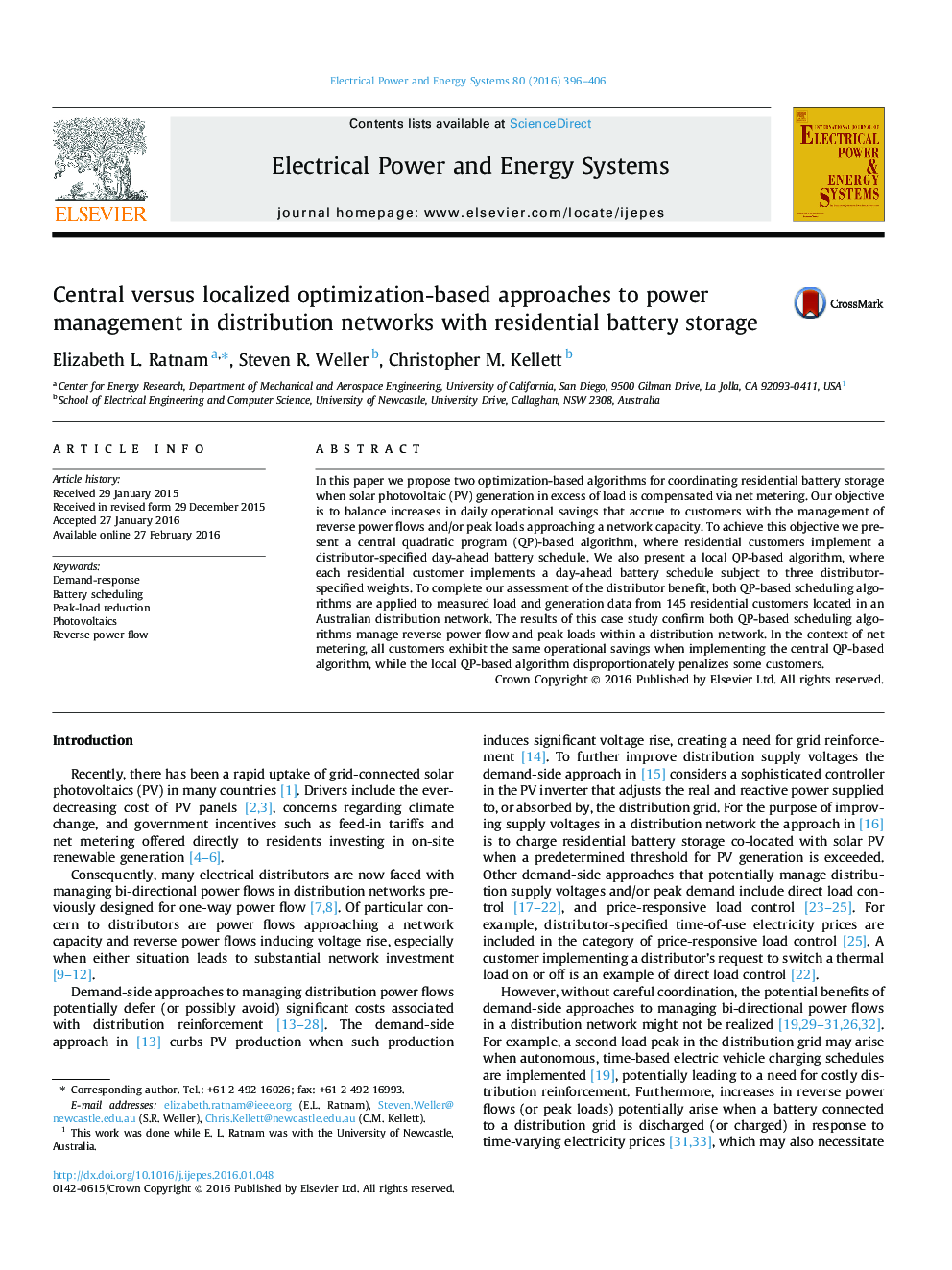| Article ID | Journal | Published Year | Pages | File Type |
|---|---|---|---|---|
| 398290 | International Journal of Electrical Power & Energy Systems | 2016 | 11 Pages |
•Central and local quadratic program-based scheduling of residential battery storage.•Increase daily operational savings in the context of net metering.•Balance the management of bi-directional power flows against increases in savings.•Applied to a dataset consisting of 145 Australian residential customers with PV.•Power flow management in the case study comes at a cost to the residential consumer.
In this paper we propose two optimization-based algorithms for coordinating residential battery storage when solar photovoltaic (PV) generation in excess of load is compensated via net metering. Our objective is to balance increases in daily operational savings that accrue to customers with the management of reverse power flows and/or peak loads approaching a network capacity. To achieve this objective we present a central quadratic program (QP)-based algorithm, where residential customers implement a distributor-specified day-ahead battery schedule. We also present a local QP-based algorithm, where each residential customer implements a day-ahead battery schedule subject to three distributor-specified weights. To complete our assessment of the distributor benefit, both QP-based scheduling algorithms are applied to measured load and generation data from 145 residential customers located in an Australian distribution network. The results of this case study confirm both QP-based scheduling algorithms manage reverse power flow and peak loads within a distribution network. In the context of net metering, all customers exhibit the same operational savings when implementing the central QP-based algorithm, while the local QP-based algorithm disproportionately penalizes some customers.
